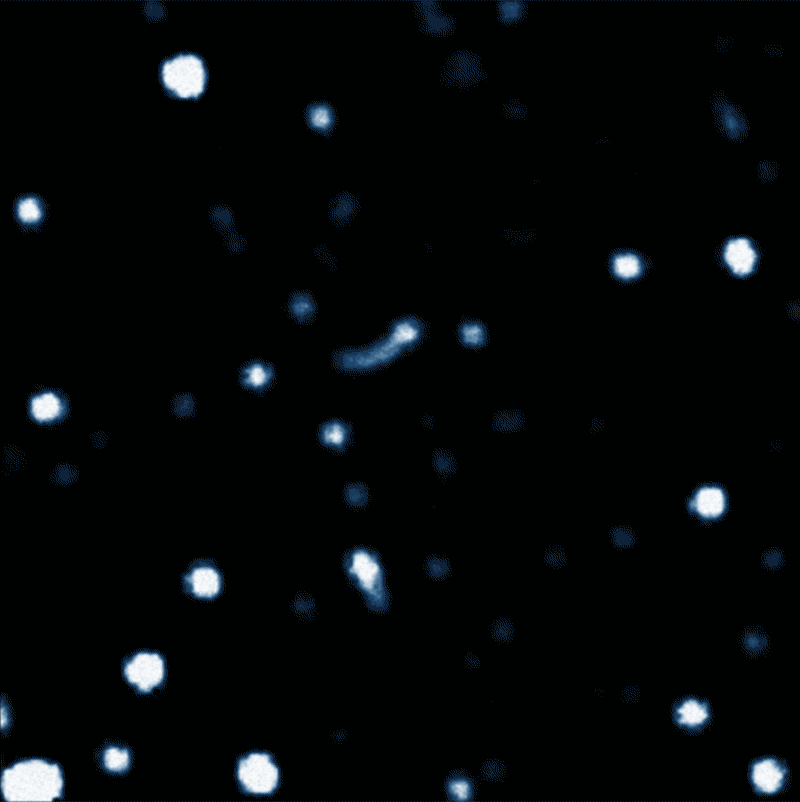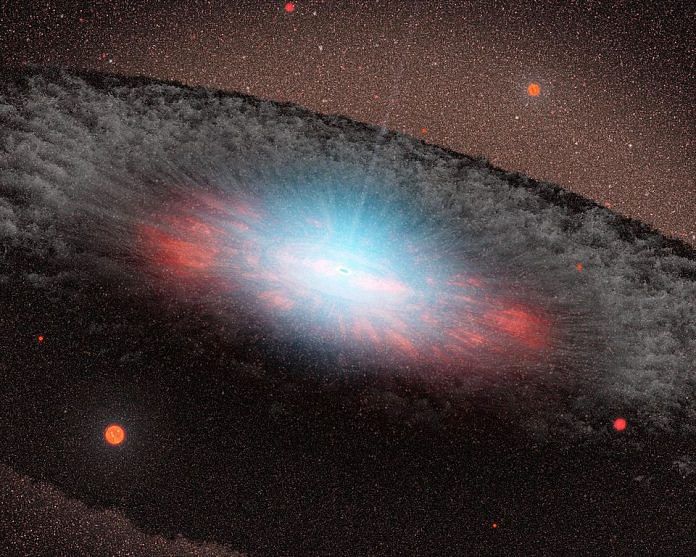Stars close to the supermassive black hole were found to be losing energy, a phenomenon predicted by Einstein almost 100 years ago.
Bengaluru: Bang in the middle of our galaxy, on a patch of sky known as Sagittarius A* sits a supermassive black hole (SMBH) with 4 million times the mass of the sun, and whose gravity is so strong that the entire Milky Way galaxy revolves around it despite being 26,000 light years from us.
Astronomers from the Max Planck Institute for Extraterrestrial Physics in Garching, Germany, used telescopes at the European Southern Observatory in Chile to monitor stars revolving close to the supermassive black hole and observed a phenomenon called gravitational redshift.
This means that the light from the stars close to the black hole, in the face of such immense gravitational power, loses energy, something Albert Einstein had predicted more than 100 years ago in his theory of ‘General Relativity’. Its findings are significant in proving that relativity holds true even at extreme environments.
The study was a collaboration between scientists of different countries and the result was published in Astronomy and Astrophysics, an international journal.
Also Read: Mainstream media continues to peddle pseudoscience on eclipse day
The extremes of energy around a supermassive black hole are quite incomprehensible to us. The stars at the centre of the galaxy rotating directly around Sag A* have been measured to be several hundred times more massive than the sun, and they go around the black hole at incredible speeds.
What the astronomers observed
Among these stars, scientists observed one, S2, that’s at least 14 times the mass of the sun. Its orbital period around the black hole is just over 16 years, about the time Jupiter takes to go around the Sun. However, its distance from the black hole is over four times as far away as Neptune is from the sun.
In May, astronomers noted S2 completing yet another orbit around the sun, at 7,600 km a second. That brings it to nearly 3 per cent the speed of light.

Just like the fictional image of humans who fall into a black hole undergo stretching out — technically called spaghettification — light stretches out too. Its waves also stretch out, changing wavelength and going from various other colours to red. This was observed in the light emanating from S2 as it went around Sag A*.
This occurs because to beat the amount of gravity exerted by the black hole, individual photons need to expend a lot more energy to escape the pull and continue traveling at the speed of light. So they change their wavelength instead of changing their speed.
The centre of our galaxy is ideal for such an observation to test out Einstein’s theories in the extreme, as it is the perfect hotspot of stars going around a black hole.
“During the close passage, we could even detect the faint glow around the black hole on most of the images, which allowed us to precisely follow the star on its orbit, ultimately leading to the detection of the gravitational redshift in the spectrum of S2,” said Frank Eisenhauer (MPE), principal investigator of the study, in ESO’s press statement.
Other implications
There are more implications of this finding as well.
Firstly, future observations are planned to test out yet another prediction made by general relativity, called the Schwarzschild precession. This occurs when a star would move away from the black hole in its orbit and the star’s orbit undergoes a slight rotation, like a change in its direction or axis. This is similar to a plate rotating on the floor after it falls just before it comes to a rest.
This was observed earlier with the orbit of Mercury which shifts by 1 degree every 625 years. Plotted on a paper, its orbit goes around the sun like a spirograph.
Secondly, the results show that at gravitational extremes, it is Einstein’s predictions that hold up and not Newton’s, which does not predict such a change with respect to light.
Thirdly, astronomers are now a step closer to capturing an actual image of the Sag A* SMBH which we still have not physically seen on camera, because of dust and other layers of disturbances between us and the centre of the galaxy.
If we are lucky, we could even see light twisting and warping its way around the black hole, like portrayed in the movie Interstellar.
Also Read: Two IIT-Bombay scientists are changing the way the world looks at mist



